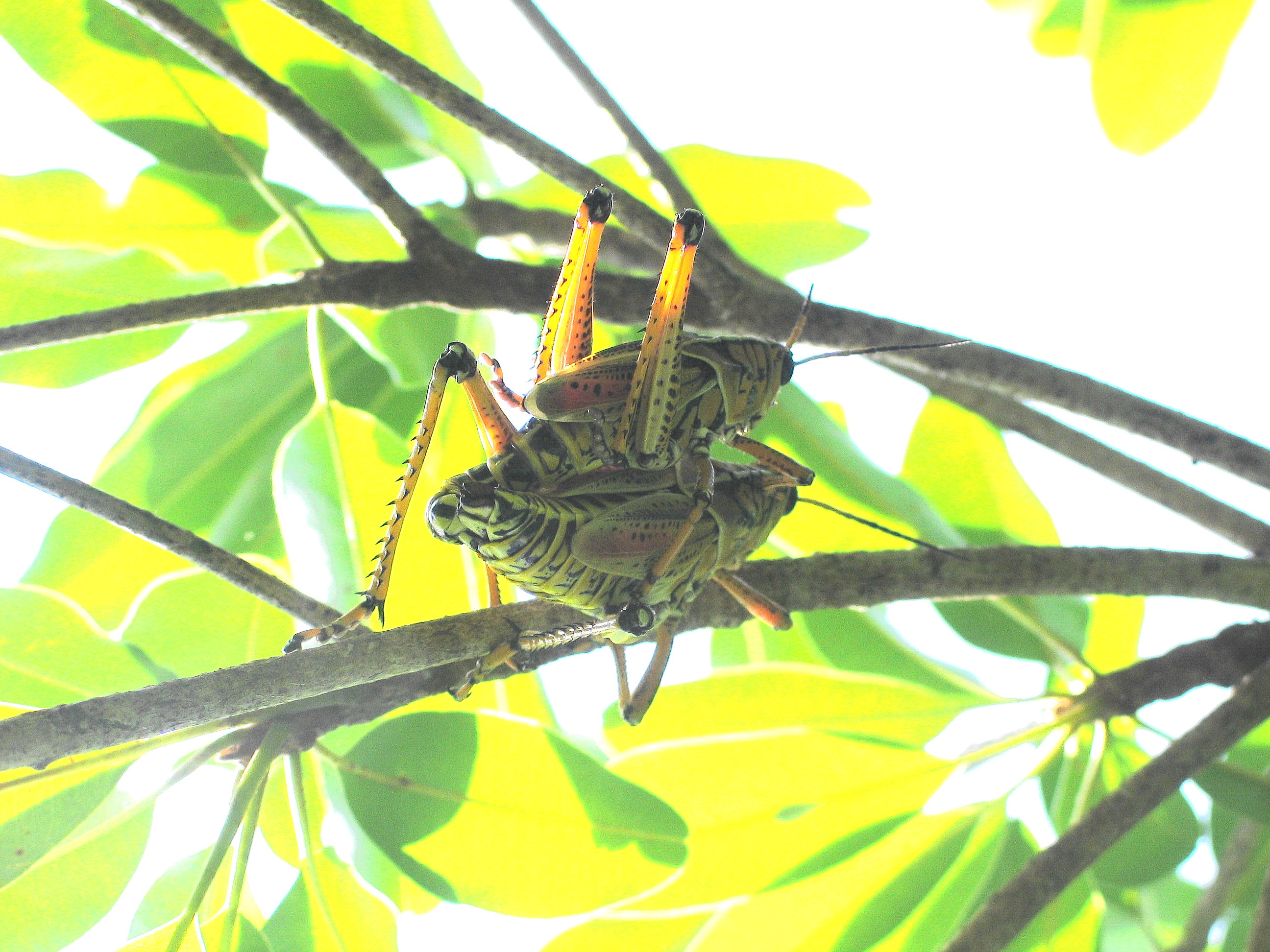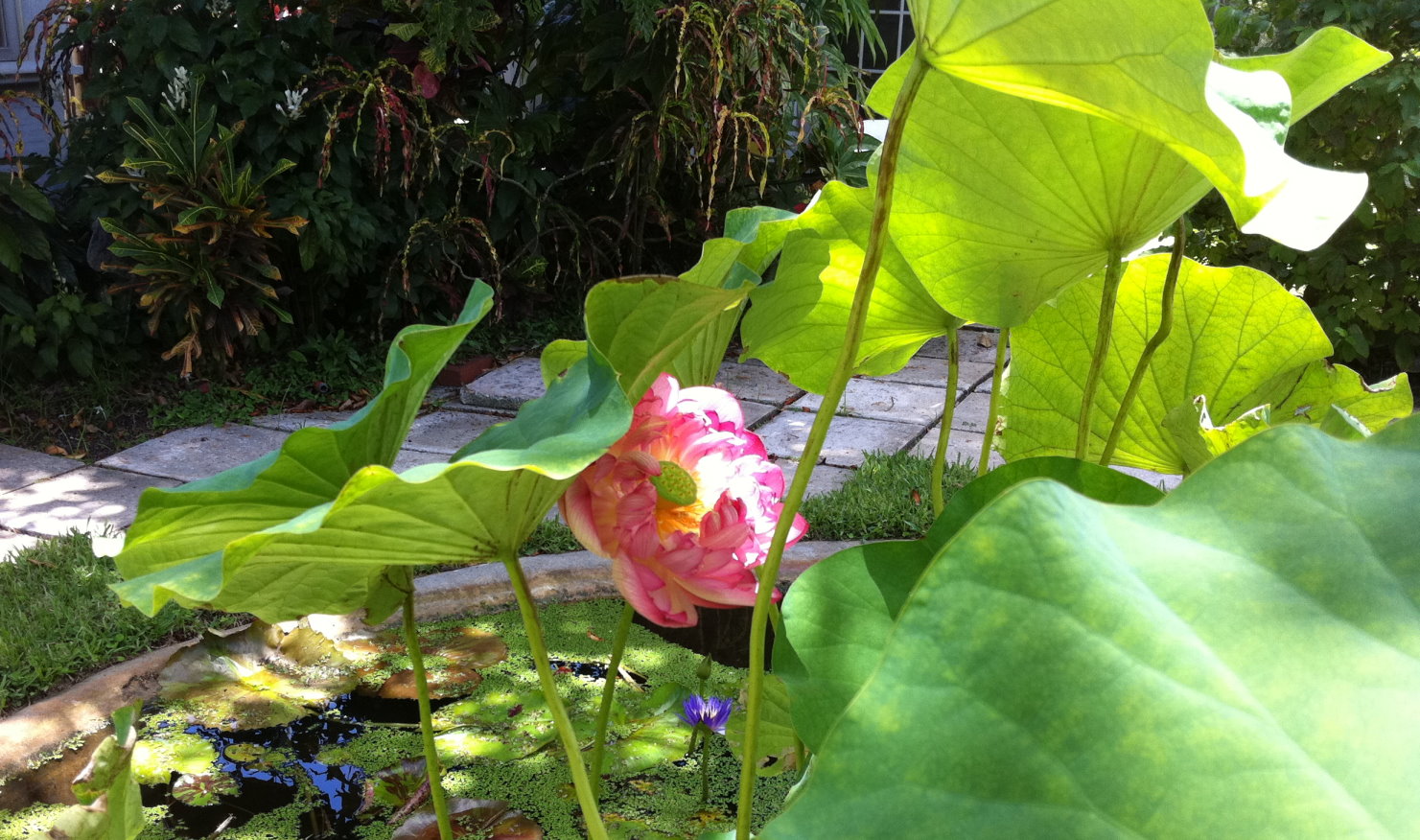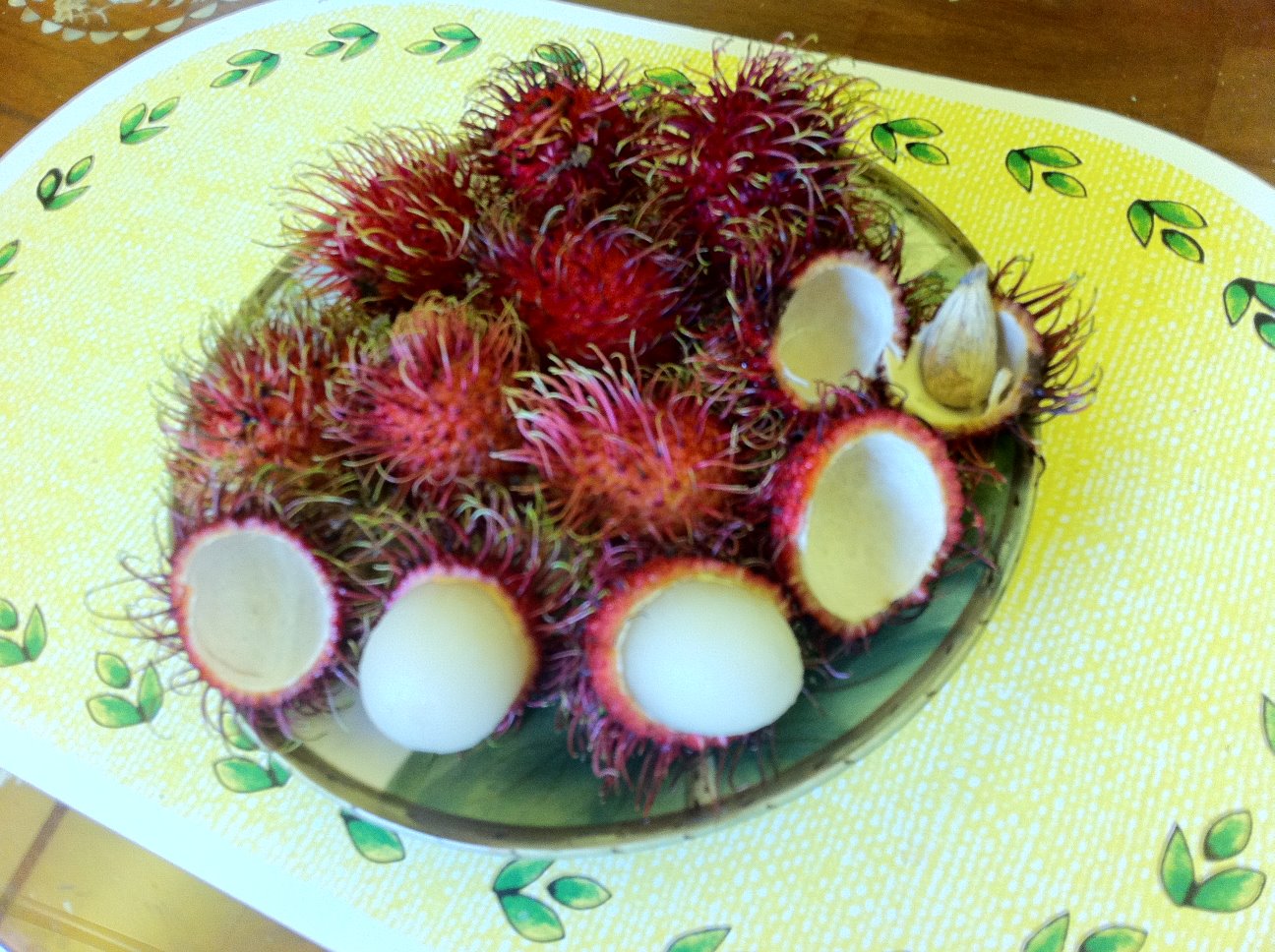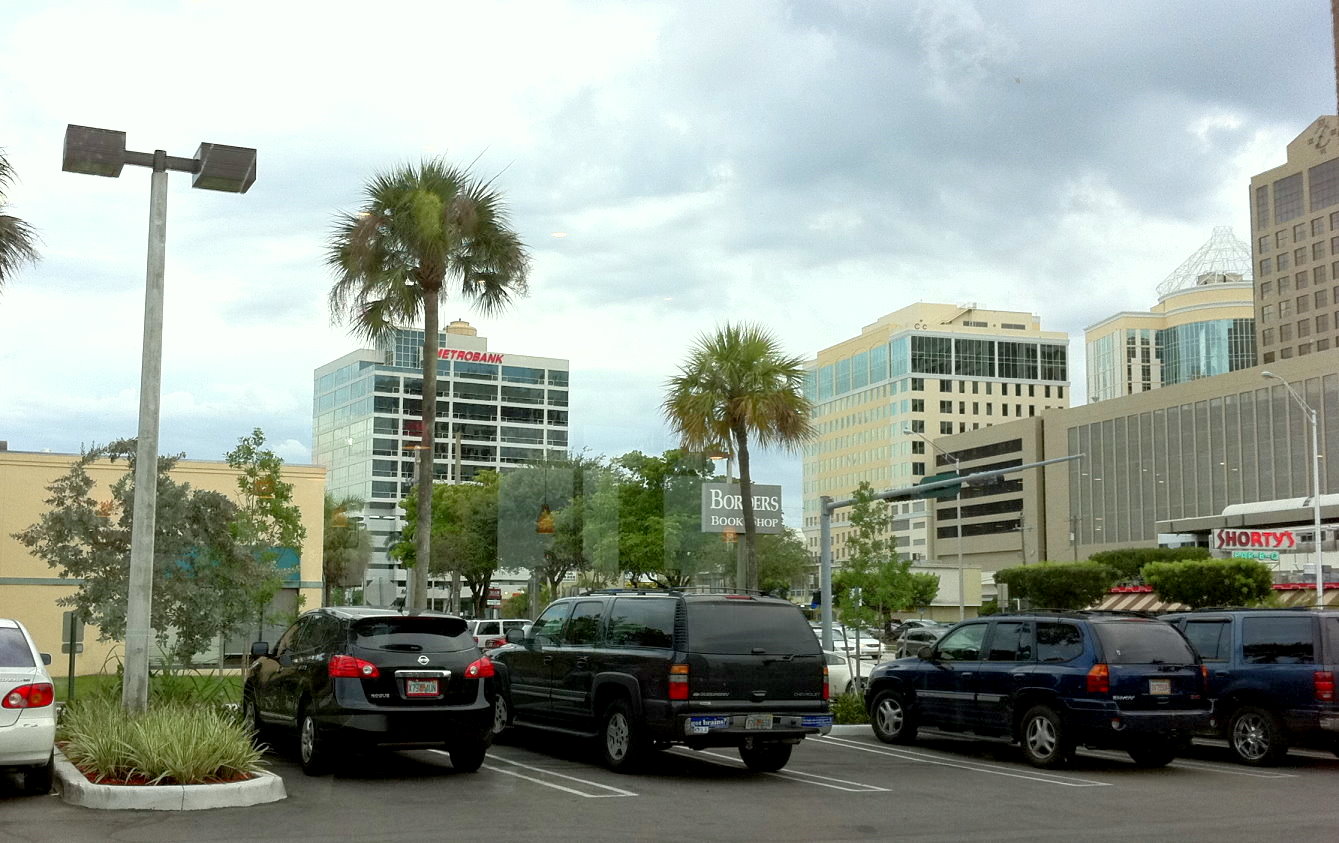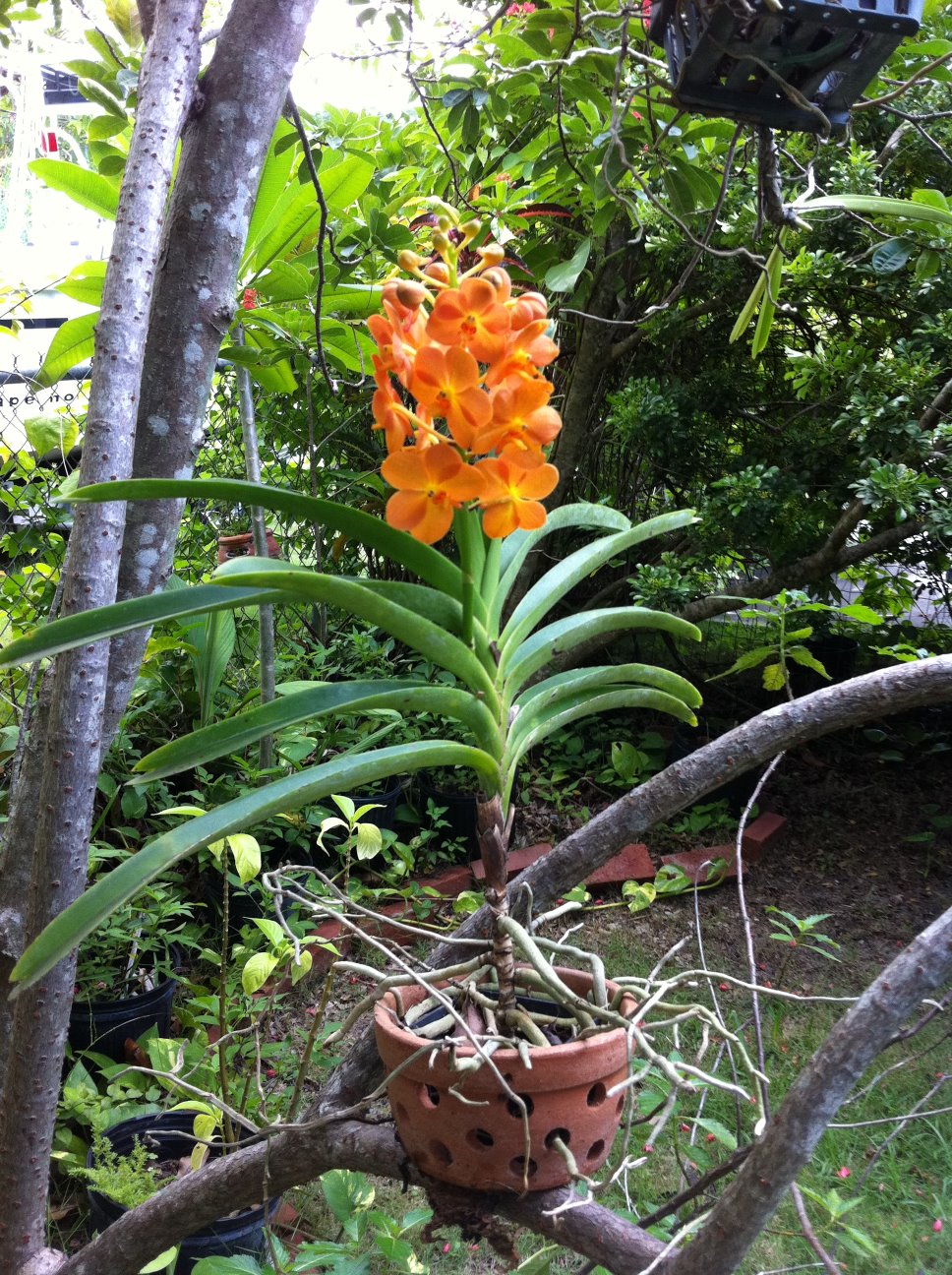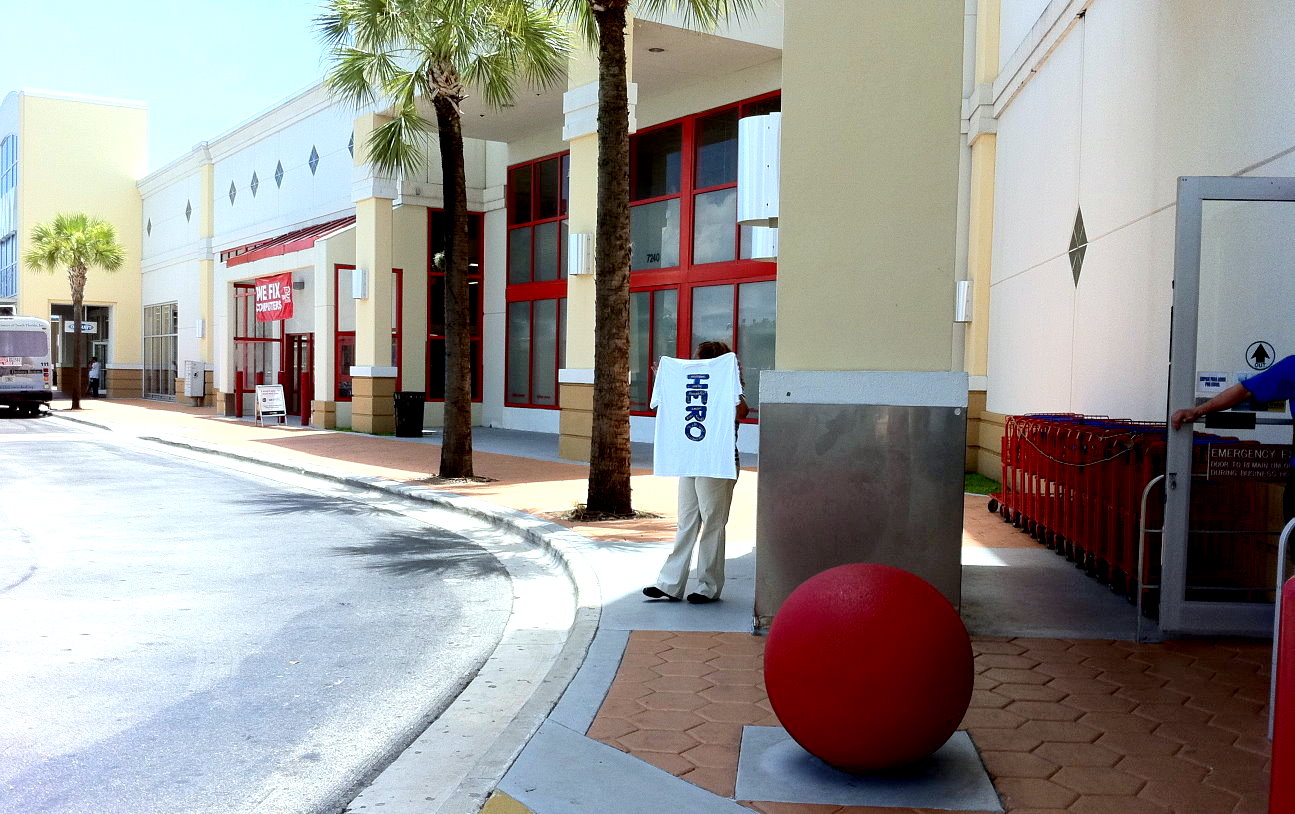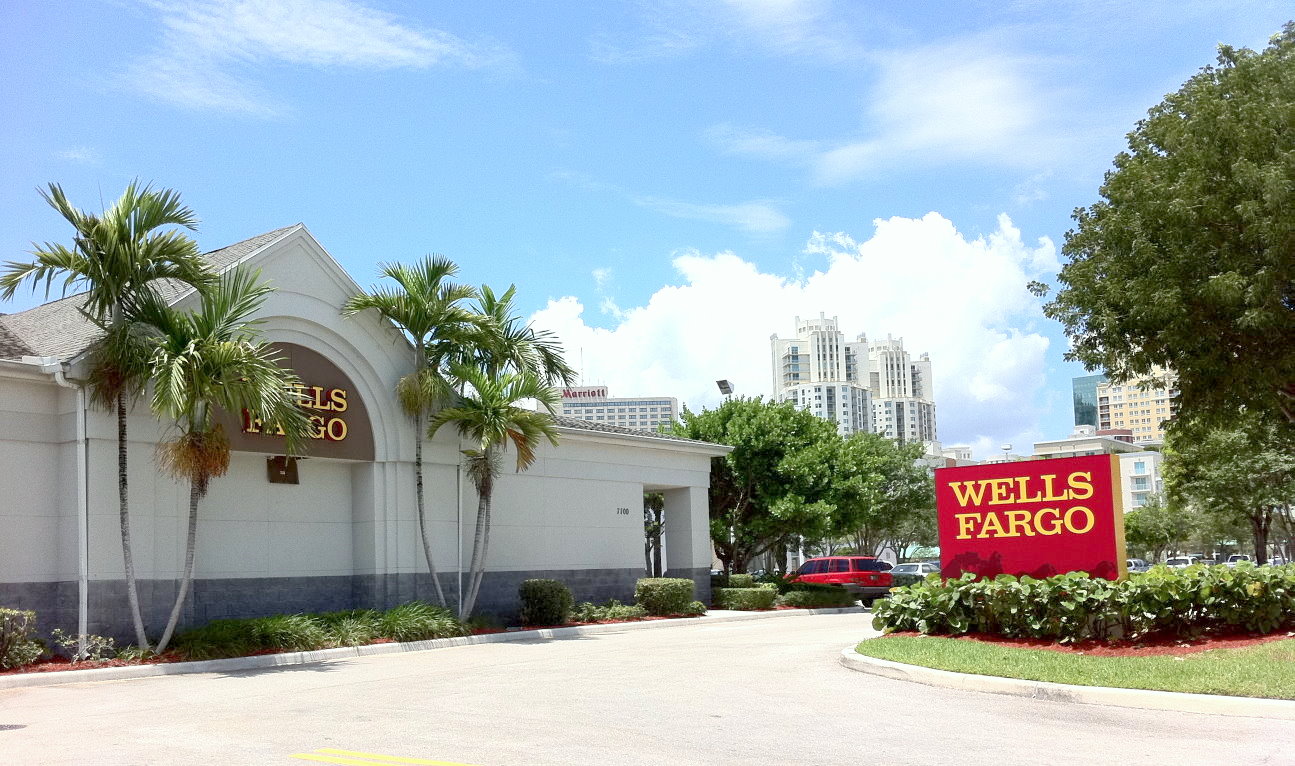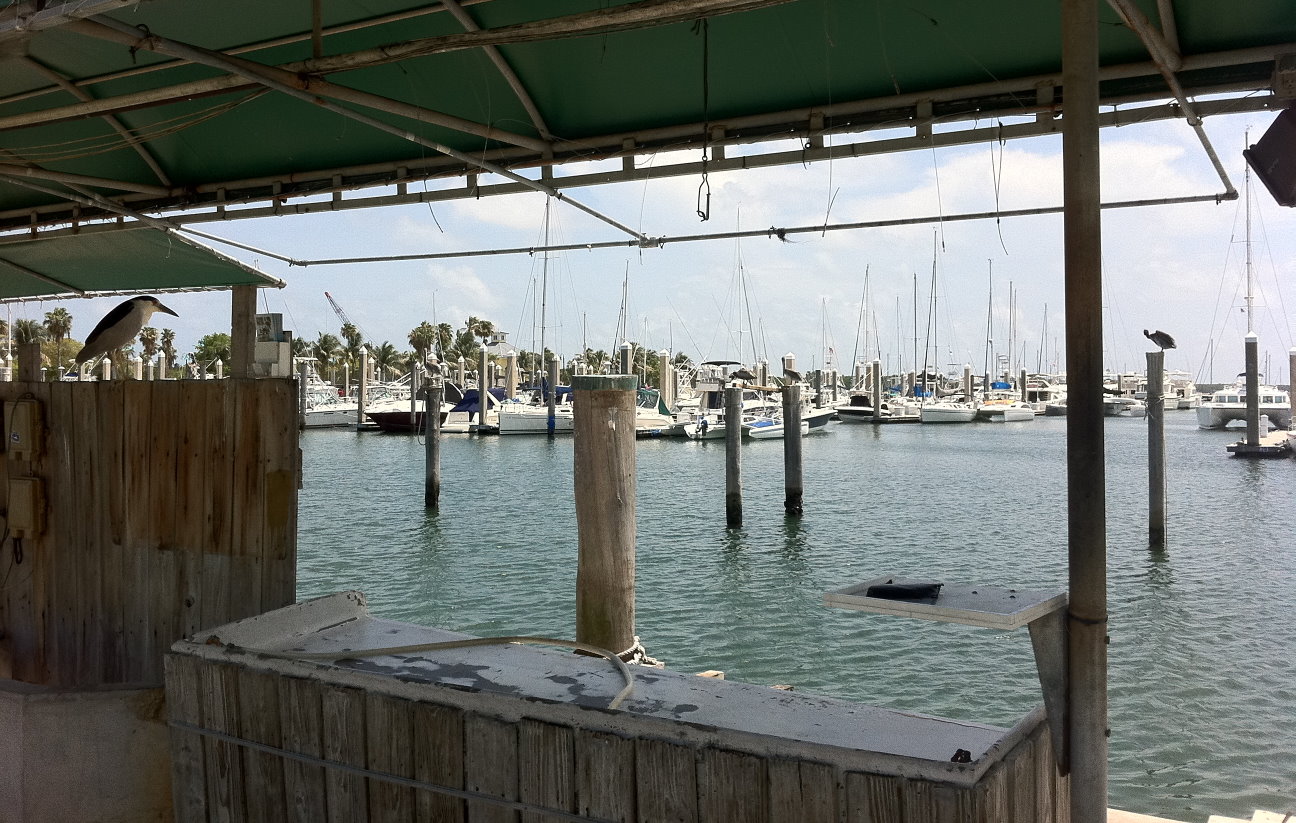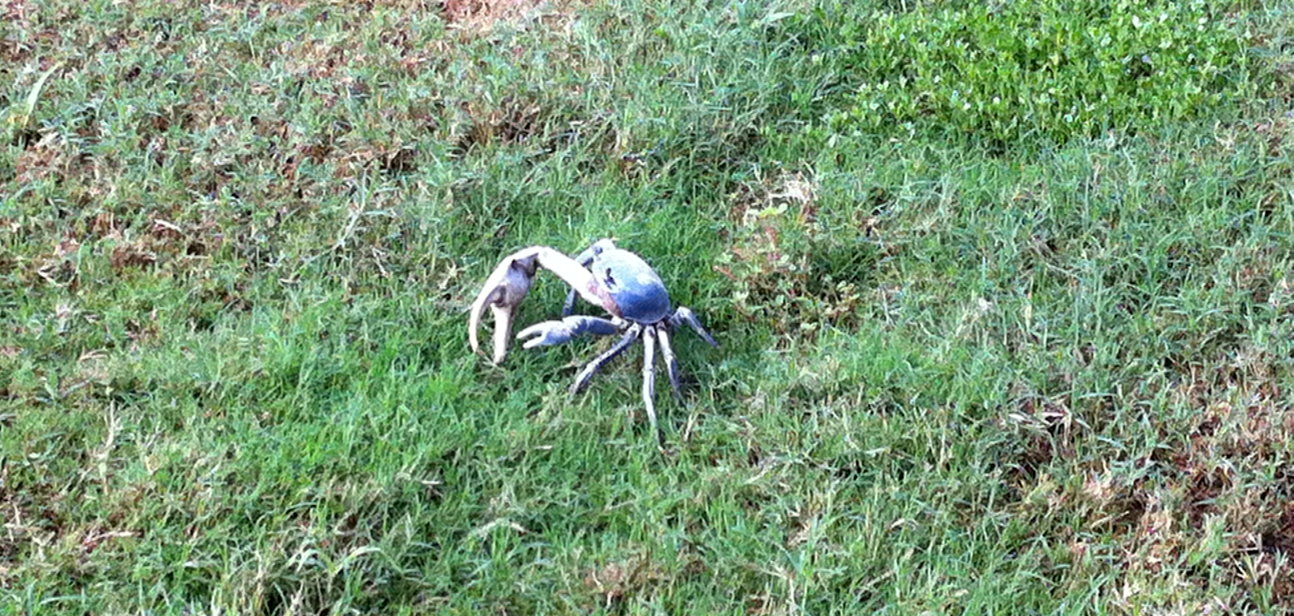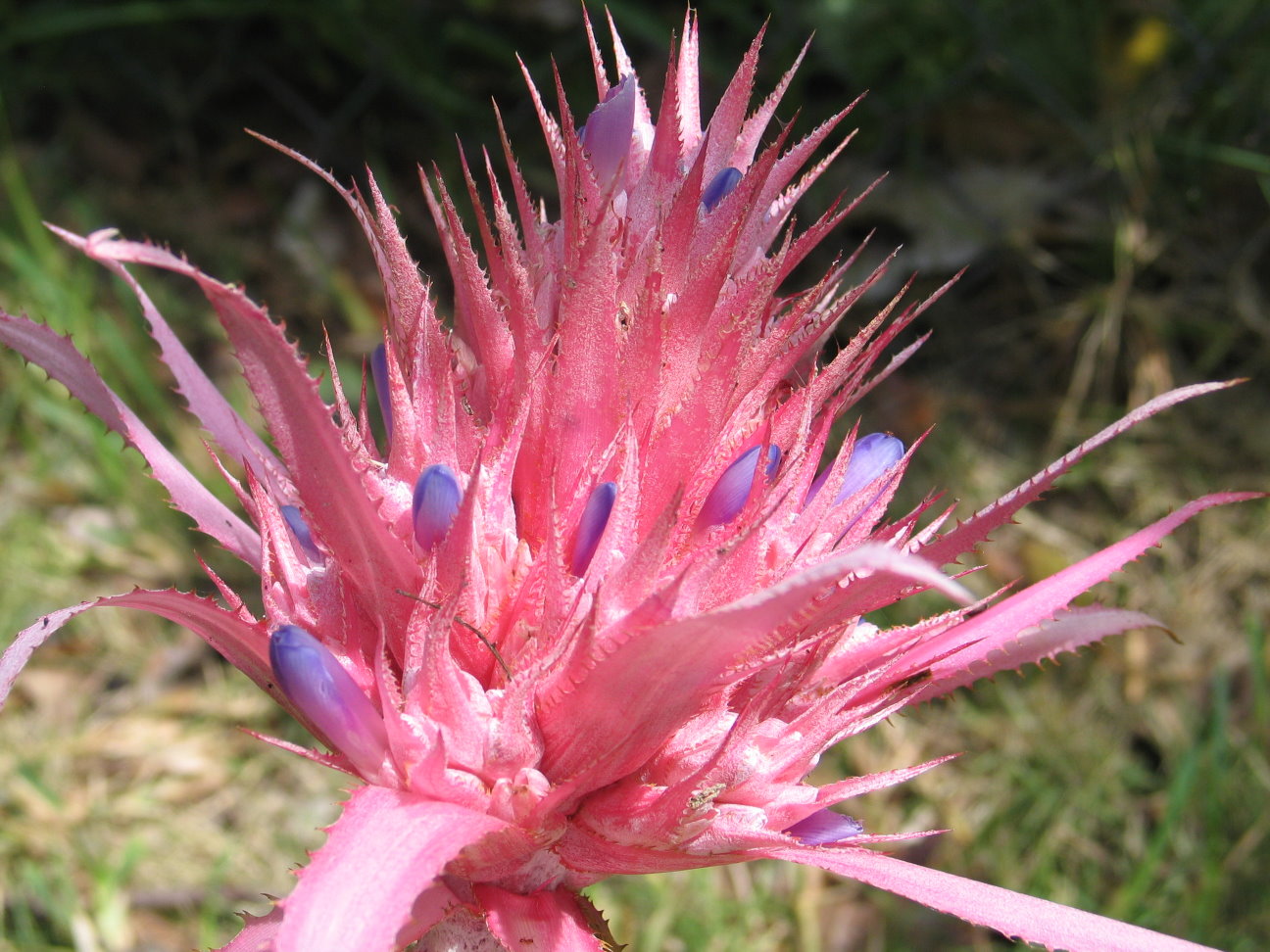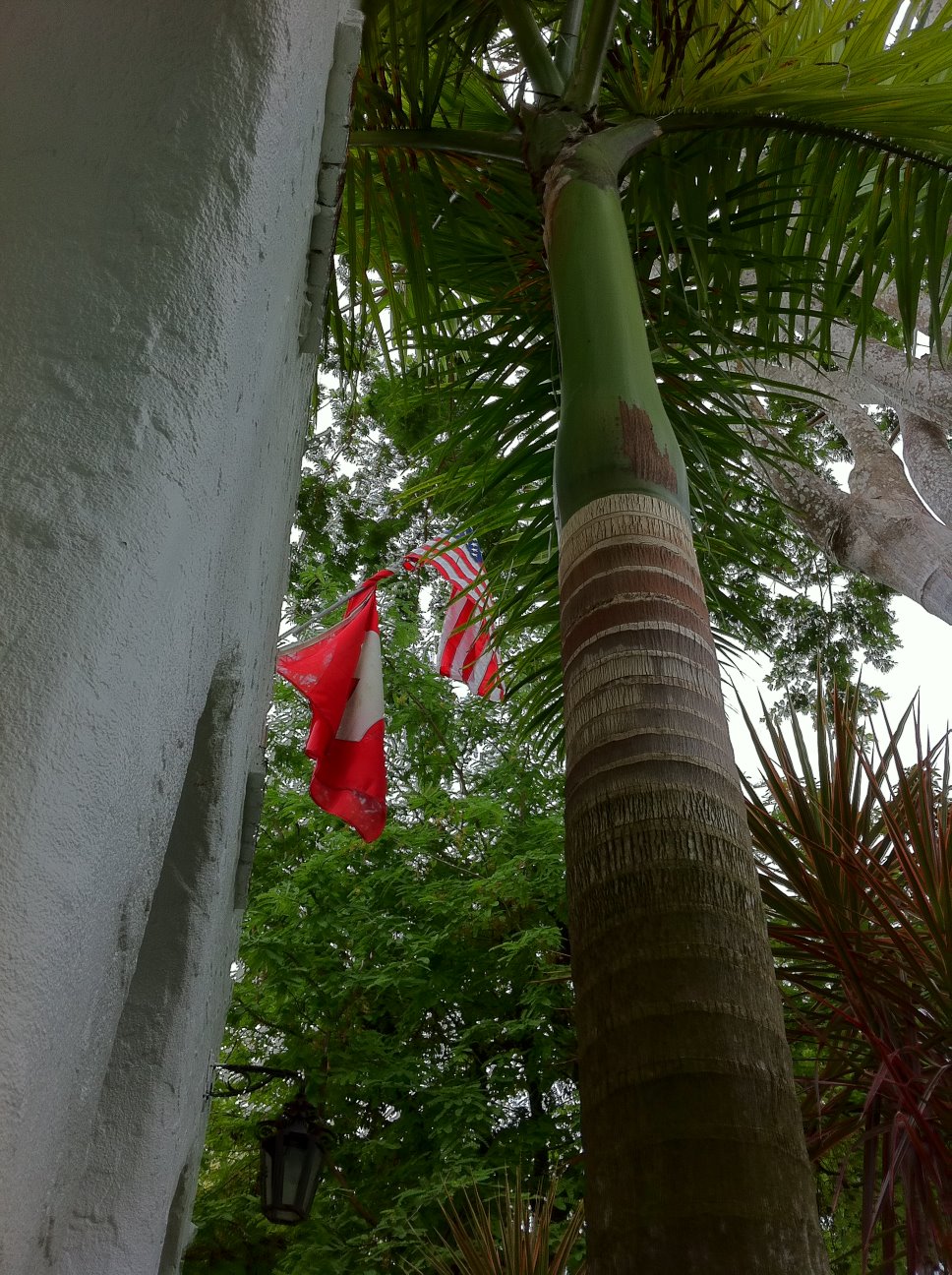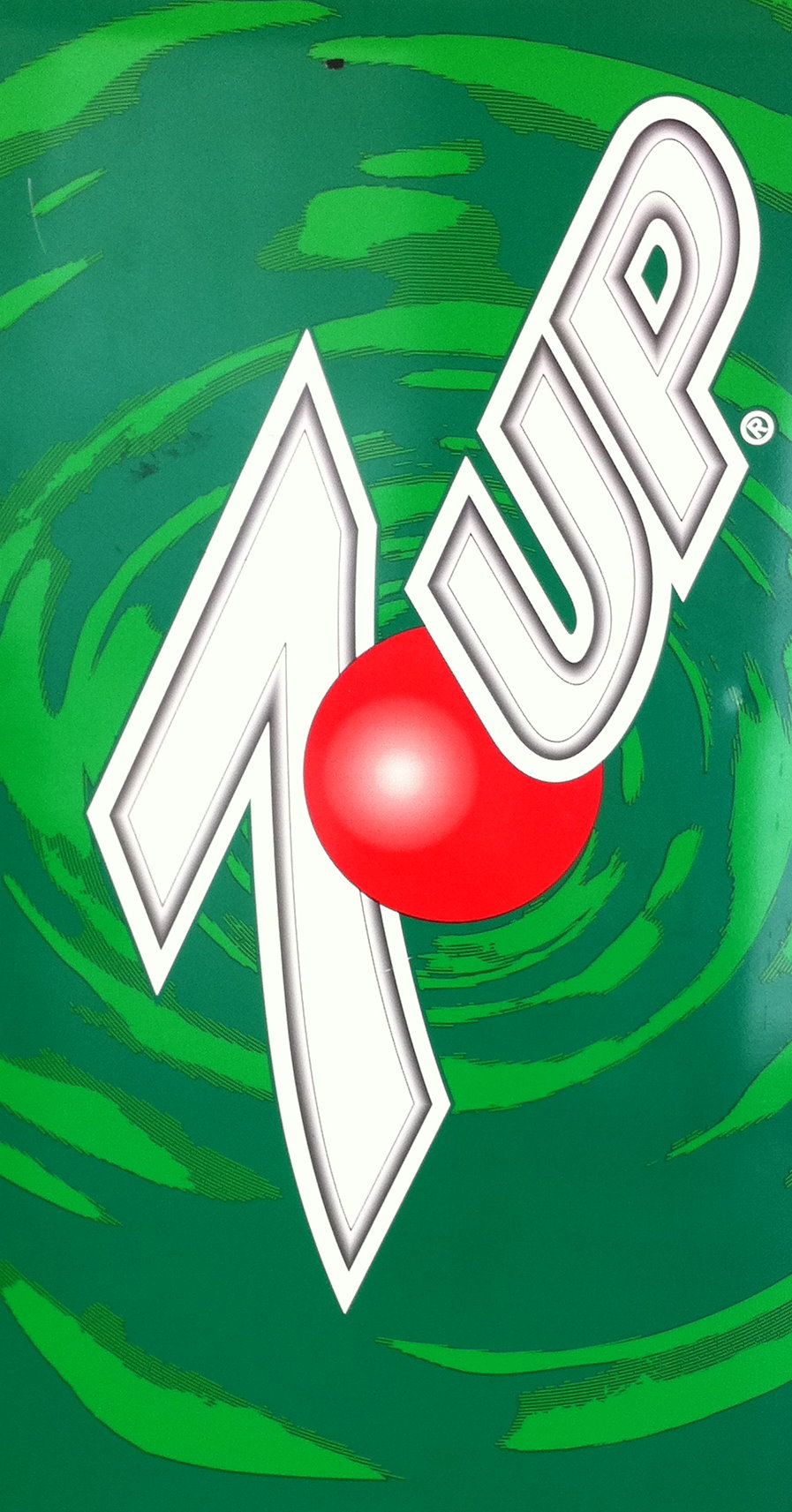Just about every year, I can get a few of these photos from my backyard. This year, I decided to get it out there... so this is about the grasshoppers and their conquests.
Grasshoppers' hind femora are typically long and strong, designed for leaping. Generally they are winged, but hind wings are membranous while front wings are coriaceous and not fit for flight. Did you know that these wings really were not designed to fly, but to help finding mates? Read on... Females are normally larger than males, with short ovipositors. Males have a single unpaired plate at the end of the abdomen. Females have two pairs of triangular valves at the end of the abdomen used to dig in sand when laying their eggs.
Let me tell you this first, before we get to more exciting reading... In certain countries, grasshoppers are eaten as a good source of protein. In Mexico for example, chapulines (grasshoppers of the genus Sphenarium) are sought for their high content of protein, minerals and vitamins. They can be boiled or eaten raw, sun-dried, fried, flavored with spices, such as garlic, onions, chile, drenched in lime, and used in soup or as a filling for various dishes. They are abundant in Mexican food and street markets, particularly in the central regions. Grasshoppers are served on skewers in some Chinese food markets, like the Donghuamen Night Market. In some countries in the Middle East, grasshoppers are boiled in hot water with salt, left in the sun to dry then eaten as snacks. Raw grasshoppers should be eaten with caution, as they may contain tapeworms.
The above may have grossed you out, so here comes the more romantic facts regarding these critters...
Grasshoppers have an amazing ability to identify their mates. Each species has its individual song, produced by rubbing or flicking the lower back legs on the fore wings to create either a chirping or a clicking sound (this is known as stridulation.) Females sing more softly than males, facilitating differentiation between both sex and species. Species that make no sound rely on sight and scent to find a mate. Males emit pheromones, external hormones which attract females, while other species use their excellent eyesight to enable identification by color. The tiny, wingless grasshopper Drymophilacris bimaculata of Costa Rica has a brilliant green body with glimmering gold accents on its head, thorax, and genital areas. The male of this species searches out its mate by drumming its hind legs on its preferred food plant. The female drums back, and the pair identify each other by their unique coloring.
Elaborate courtship routines are performed by males in some species. The American grasshopper Syrbula admirabilis displays 18 individual poses using its wings, legs, and palps. Males of other species may wave brilliantly colored wings when wooing the female, while other species forego courtship altogether.
Mating occurs when the male lands on the female's back and this may last anywhere from 45 minutes to well over a day. In the species Extatosoma tiaratum, a female mates with several males. Most of the sperm in her genital tract from the first suitor is replaced by that of her next mate. Males therefore mate many times with the same partner and other females to gain the maximum opportunity to pass on their genes. Males of some species die shortly after mating. The females die after egg-laying, which may last until the cold weather begins.
Wow! Did you know all that? So here it is... I did some color enhancement to highlight the grasshoppers which resulted in the background leaves looking strange. Sorry.
